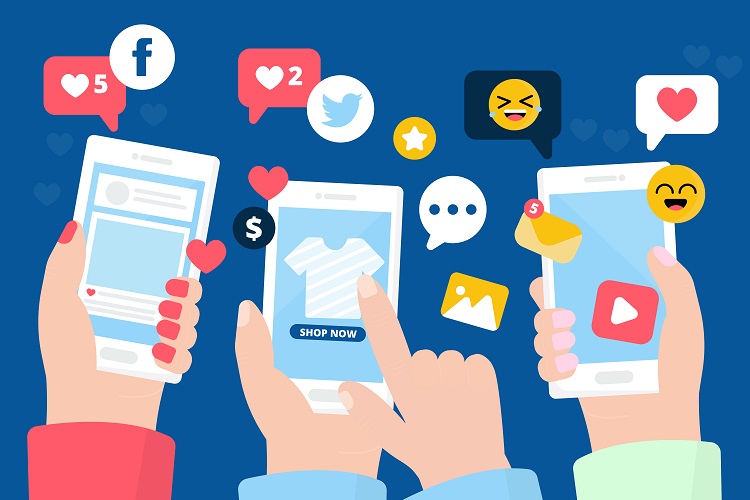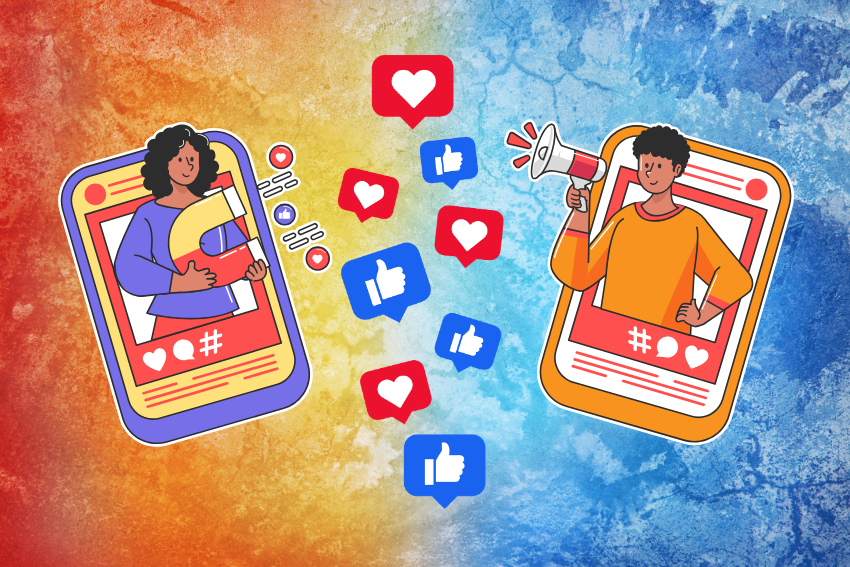The advent of social media app banality of life has transformed the history of human relationships, granting a new social dynamic to the present online life. While the endless updates, notifications, and conversations on social media have taken place, the low-key elements of life should be paid more attention to.
The internet age’s massive use of repetitive tweets, shallow dialogues, and a sensation of being with the crowd makes you see one social media site much like the others, leading to the trivialized and mediocre becoming of the internet content, performance, and life experiences.
The proliferation of social media interventions in our lives has eternally changed our relationship with technology and the people around us. We often see the part of our lives that seems the most mundane and lacking in any meaning, such as watching favorite TV shows or monitoring our own and our friend’s likes and feed activity.
To sail through the digital environment and to develop a better way to enhance the authenticity of our online presence, we must know where the digital persona emerged, what it is, and what its effect is on us. The article will review the banality theory through the spectacles of social media, specifying how it impacts individuals, communities, and culture.
Understanding Social Media App Banality of Life
Banality refers to the state of being unoriginal, mundane, or trivial. It is characterized by a lack of novelty or excitement, often resulting in monotony or boredom. Multiple forms of social media app banality of life, for instance, including the tedious info and the fake social relationships, are the generic experience of the social media world.
The word “banality of life” describes the simple and dull parts of our day by day ordinary – the things we do time and again and without problems neglect.
These standard activities are introduced to the forefront with the aid of the regular posts and snap shots on social media apps.
An overwhelming saturation of people’s ideas, experiences, and creativity enabled by social media platforms contributes to the growth of lackluster content on Facebook, Instagram, Twitter, and TikTok.
The Banality of Content
Instagram is overwhelmed with bland updates, “repetitive posts,” and unengaging information. A more detailed explanation of the social media app banality of life can be found here:
Mundane Updates
It is not exaggeration to say that social media revolutionized people’s daily life, as the boring repetition, and mundane parts of it have become the common themes for popular updates.
However, among the trivia that can be shared like food pictures and ordinary matters including going to the gym and taking the pet for a walk, is just an example of the unimportant details that users willingly post on social media. While the updates may seem a bit repetitive and nothing special to feeds, they are a part of the overall mood of dullness.
Repetitive Posts
The fact that one has posted this way before already is another case saying about the boredom associated with the content. The internet is pretty much flooded with nothing but repetitive content, from the mushrooming of trends and memes.
People frequently get on the bandwagon, making innumerable variants of the same theme, whether it’s a specific hashtag challenge or a format for viral videos. Users may get tired of seeing the same old stuff and experience content fatigue as a result.
Overemphasis on Appearance
A lot of the stuff on social media platforms is very pretty but doesn’t really offer much substance. In order to give the impression of having an ideal life, users may spend a lot of time editing their selfies or setting the scene.
Although these postings may gain followers and likes, they don’t usually have anything meaningful to say, which adds to the social media landscape’s general lack of originality.
Inauthenticity and Curation
The urge to have a well-manicured online identity could lead to inauthenticity and the subsequent tedium of material. Users may feel pressured to portray an idealized self-image, picking and choosing which parts of their lives to highlight and which to keep hidden. A sanitized version of life can be perpetuated on social media as a result of this focus on display rather than authenticity.
The banality of interaction
Social media networks host dull material and enable dull user interactions. Examining this in greater detail reveals:
Superficial Engagement
People prefer emoji reactions or short comments instead of having meaningful conversations on social media, which leads to superficial engagement. The general feeling of social media app banality of life is exacerbated by these superficial exchanges, which value quantity above quality, such as a generic “Nice pic!” or a string of emojis.
Echo Chambers and Confirmation Bias
Social media algorithms exist which contribute to the layer of echo chambers that allow people who agree with each other to reinforce their beliefs and tastes, and the like which is exactly what people already believe and try to understand.
Confirmation bias is the tendency to selectively notice and remember information that supports one’s preexisting beliefs. A deadlock in communication can emerge if people start to provide the same views, opinions, and familiar information while ignoring the opportunity to rethink their previous view points.
The Cult of Celebrity
This extremely selfish way of life is seen in modern society because of how social media stars and celebrities are exalted. Desperately wishing to be loved and approved of, they attract devout crowds who try like very enthusiastic to follow the lead of their every action and word. Consequently, this community reproduces the tendency by letting people who are drawn in by admiration instead of true connection take part.
The Tyranny of Likes and Shares
Quantifying social acceptance through likes, shares, and followers can also add to the dullness of engagement, leading to the tyranny of these metrics. Irrespective of its quality or relevance, users may give more weight to content predicted to receive a large amount of engagement.
As a result, users may resort to sensationalist content, clickbait headlines, and other forms of attention-seeking behaviour in their pursuit of approval and fame.
The psychological impact
There are a number of ways in which the monotony of social media life can negatively affect users’ mental health and wellbeing:
Comparison and Envy
The constructed reality that people show off on social media, highlighting the best parts of their lives while hiding the bad, can lead to feelings of envy and comparison. Because of this, people may experience what’s called “social media envy,” a condition in which they feel inadequate, resentful, and envious of other people’s apparently ideal lives.
Fear of Missing Out (FOMO)
Through the continuous stream of content on their screen the social media users are unable to avoid that phenomenon of the FOMO, thus the feeling of an imminent danger of missing out on potential parties, travels, and contacts becomes hard to get rid of. Within the fear and confusion of being left behind or overlooked, they become anxious and depressed, which makes them check their feeds more.
Distorted Perceptions of Reality
It may happen that people are ready to start comparing their life to the world they see on social media and as a result the opinions and standards of the people could change due to this influence.
The prevalent feelings of insecurity and low self-esteem may be put to high level by the creation of a not true reality that arises from somehow shaky posts, music videos which make look excellent and able to sum up how a person feels and lastly an Instagram picture which may look very nice and attractive after being edited.
Impact on Self-esteem
Adolescents and young adults, in particular, are at increased risk for low self-esteem, sadness, and anxiety due to their heavy social media usage, according to research. Negative psychological effects might result from constantly comparing oneself to others and feeling pressured to exhibit an idealized version of oneself.
The Societal Impact
Social media’s portrayal of everyday life has far-reaching effects on society as a whole, moulding values and standards in significant ways:
Trust in Conventional Institutions
There has been the dismantling or discrediting of institutions like media, government, and science by the false information that has flooded the social media platforms. A loss of faith in common authority figures and subject matter experts can result from the spread of echo chambers and filter bubbles, which confirm pre-existing prejudices and discourage users from critically assessing information.
Impact on Political Discourse
The rise of social media as a medium for political activism, mobilization, and polarization has altered the nature of political discourse. People may feel more comfortable engaging in uncivil behavior and divisive rhetoric when they are able to maintain their anonymity and distance on social media. As a result, civility and mutual respect suffer in public conversation.
Commercialization of Culture
Ads and marketers compete for users’ attention and participation on social media platforms, which is dominated by commercial interests. As sponsored posts and influencer endorsements grow more common, the boundaries between advertising and content may blur due to this commercialization of culture. Cynicism and distrust of commercial messages may set in when users experience overwhelming promotional content.
Impact on Civic Engagement
Apathy and disengagement are possible outcomes of social media’s ability to promote civic engagement and political participation. The continual flood of sensationalist headlines and clickbait stories might cause a feeling of knowledge overload and aversion to engaging with complicated subjects.
There is less room for constructive civic conversation since social media algorithms can isolate users in “echo chambers” that only reinforce pre-existing views and deter them from seeking out other points of view.
The cultural impact
Our shared awareness is profoundly impacted by the social media app banality of life, which impacts cultural standards and values:
Shift in Values and Priorities
The social media platforms entrenched overtly in the promotion of materialism, consumerism, and momentary satisfaction influence cultural values and priorities thus, end up changing their perspectives.
People could possibly become obsessed with comparing and being vain as a result of such a culture where people’s appearances and image are the ones that are prioritized as the sole factor of attracting others instead of inner growth, empathy, and compassion.
Normalization of Celebrity Culture
The line between celebrities and other people is no longer visible with the help of social media where the culture of celebrities is being normalized. A lot of self-declared celebrities and micro-influencers are famous now because of the blooming of influencer culture; they have an impact on the life of follower’s and greatly influence the way we dress, talk or how we behave.
The more we aspire to the models created online, the stronger the normalisation of celebrity culture. This might lead to a blindness of our moral principles and distract us from what’s really necessary.
Influence on Language and Communication
Noticing distinctive speaking and self-expression fashioned by alterations on social media platforms is the ideal proof of their impact on communication. The media we use on the net to connect and communicate with each other are modified and affected by emojis, abbreviations, and memes.
Although the new technologies can certainly increase communication effectiveness and have a social effect, they also make those values and textures susceptible to damage because they are being depleted.
Globalization and Cultural Homogenization
The increase in social media use guarantees that it’s now possible to communicate and even develop transnational links regardless of the location that someone may be in. The fact of the rapid spread of memes and trends around the world hides two risks – the first is the interaction that promotes cultural homogenization, and the second is awareness and appreciation of the diversity of cultures.
While globalization is a key factor in cultural transfer, local traditions and customs are pushed away in favor of global trends and norms, resulting in cultural homogeneity and the rising threat of cultural characteristics erosion.
Conclusion
Undoubtedly, social media app banality of life tedium is a very complicated and multi-faceted theme that can have multiple inimical effects on individuals, their communities and cultures in general. Boredom could change the structures of our personalities and how we perceive the world and ourselves by influencing social relations, psychological health, and cultural values.
In this complex digital world, it is crucial to stop and think about the influence of social media platforms in our lives and try to achieve the outcome of healthy and happy online experiences. Social media platforms can aid humanity in its pursuit, as their underlying principles are openness, compassion, and prompt communication that can be used to shape the internet, which truly embodies our ideals and aspirations.
We may discover that the society-narrowing aspect of social media could be its key to unlocking the revolutionary power of technology: it may bridge the gap between the online and the offline spheres, foster meaningful social change, and help us form a cohesive society.






